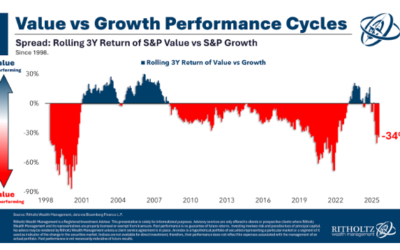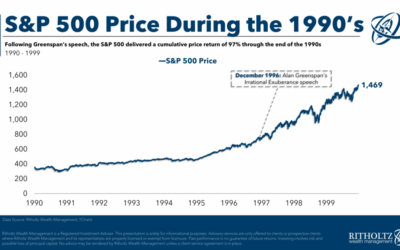Last week, Chamath Palihapitiya of Social Capital filed for a new $250 million SPAC with the SEC. The American Exceptionalism Acquisition Corp. A (AEXA), as the SPAC will be known, seeks to merge or buy a company in the field of energy production, AI, decentralized finance, or defense. Why these industries? Palihapitiya argues they are essential “if the United States is to maintain its position as the most important country on earth and the only global superpower.”
Despite his seemingly good intentions, Palihapitiya faced significant pushback before the announcement. Two months ago, he ran a Twitter poll asking whether he should launch another SPAC. Over 57,000 Twitter users voted, with 71% of them saying no. Such skepticism is understandable. In case you’ve forgotten, Palihapitiya’s track record with SPACs has been abysmal.
While the S&P 500 is up 105% (total return) over the last 5 years, many of Palihapitiya’s SPACs have lost money (and lots of it). IPOA is down 99%, IPOB is down 65%, and IPOC is down 75% over the same time period. While one of his SPACs, IPOE, is up 131% since December 2020, most of that return has come in the past year (chart via Public.com):
Despite losing investors a considerable sum of money, the self-proclaimed “SPAC King” is looking for a comeback with AEXA.
Unfortunately, that comeback doesn’t come without risk. As the AEXA filing clearly states:
We believe that retail investors should only participate if (a) this investment is a small part of an otherwise diversified portfolio, (b) this investment is a quantum of capital they can afford to completely lose and (c) if they do lose their entire capital, they will embody the adage from President Trump that there can be “no crying in the casino.”
While I am not a fan of this kind of “investing,” at least Palihapitiya is upfront about the possible outcomes.
In truth, I don’t care that much about Palihapitiya’s SPAC, but I do care about what it represents. Because it represents a return to the investor mania we experienced in 2021. So does Meta offering AI researchers $250M pay packages. So does a mattress company raising $100 million to “build the AI that finally fixes sleep.”
It’s not that any one of these things represents a mania, but collectively they do. And I know what can happen after that mania.
Of course, I am not claiming that today is the top. I can’t know that. However, I’ve only been bearish on U.S. stocks two times since I started blogging in 2017. Once in November 2021 and once again today.
Back in 2021, the speculative stories I was hearing combined with the price-to-sales (P/S) ratio of the S&P 500 suggested that something was amiss. Well, I’m getting deja vu. Below is a chart showing the P/S ratio of the S&P 500 going back to 1947 (from DQYDJ.com):
As you can see, the P/S ratio of the S&P 500 hit an all-time high of 3.41 during the peak of the DotCom Bubble in December 1999. It hit another relative high of 2.98 in December 2021. And it’s at around 3.2 today.
I understand the flaws with such valuation metrics. I’ve written about them before. But I’m not arguing that the P/S ratio needs to return to its long-term market average of ~1.2 (or anything like that). I’m arguing that, historically, the market’s P/S ratio hasn’t stayed above 3 for any extended period of time.
It’s not just the market’s P/S ratio that is concerning me. If we look at the total market capitalization of all U.S. stocks in the Russell 3000 with a P/S Ratio > 20 (aka highly valued stocks), we see a similar pattern:
This measure peaked in 2021 and it’s near another peak today. That huge dip in the chart a few months ago was from the tariff-driven selloff earlier this year. This selloff removed some excessive valuations from the market temporarily. But that trend quickly reversed and now the combined market cap of these highly valued stocks (P/S > 20) is back near all-time highs.
Others have highlighted the frothiness in the U.S. stock market and have started making bold predictions about its future. For example, Vanguard recently recommended a 70%/30% U.S. bond/stock allocation for the next decade. Yes, you read that correctly—70% bonds for the next 10 years. I’d never go that far, but it’s concerning to see these kinds of calls coming from reputable voices in the industry.
It’s not just large financial firms that are changing their tune—even AI companies seem to be getting the wake-up call. It was recently reported that Meta is freezing its AI hiring for the foreseeable future. This is an abrupt change in direction after the massive offers they were sending out just a few weeks ago. I don’t know if other AI companies will cut back as well, but the vibe seems to have changed since the lackluster launch of ChatGPT 5.
So what am I going to do about this? As Cliff Asness likes to say, “sin a little.” Am I selling all of my U.S. stocks? Of course not. No matter how wild valuations get, I will always hold (and continue buying) U.S. stocks, especially in my retirement accounts. But I did make one change.
I rebalanced my retirement accounts from 100% risk assets (U.S. Large Cap/U.S. Small Cap/International stocks/U.S. REITs) to 80% risk assets and 20% intermediate-term U.S. bonds. That’s it. A small nudge to help me sleep better at night (no AI required).
This is slightly different from what I did in 2021. Back then, I stopped buying U.S. stocks in my brokerage account, though I kept buying them in my retirement accounts.
Today, my financial situation is a bit different. I’ve only been buying U.S. Treasury bills and tax-free municipal bonds in my brokerage account for the last year or so. This has nothing to do with valuations and everything to do with my personal life (I recently got married and am hoping to buy a house in the next few years). Given that I’m not buying U.S. stocks like I normally would, a small rebalance in my retirement accounts is all I need to “sin a little.”
Of course, it’s possible that I’m wrong. I was wrong about Nvidia a year ago. And I’ve been wrong about tech (in general) for a long time. Maybe this time is different. But I’m slightly hedging my bets just in case.
Happy investing and thank you for reading!
If you liked this post, consider signing up for my newsletter.
This is post 465. Any code I have related to this post can be found here under analysis 269: https://github.com/nmaggiulli/of-dollars-and-data









0 Comments